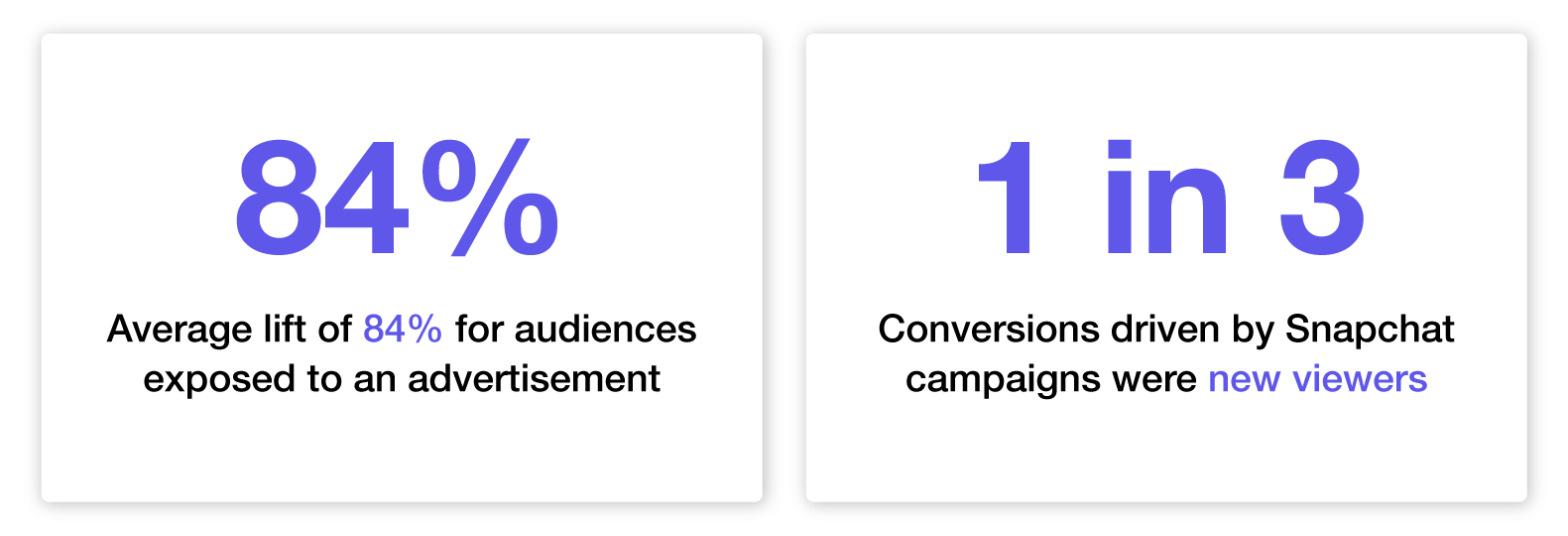Study: Snapchat Campaigns Effective in Boosting Audiences for TV Shows and Movies
New Samba TV data showed that Snapchat ads provided a 84% lift in driving audiences watch TV Shows and movies

SAN FRANCISCO—Snap and Samba TV have released a new study showing that Snapchat campaigns have a significant impact in driving audiences to watch new shows and stream movies.
The results showed an average lift of 84% for audiences exposed to an advertisement on Snapchat compared to control group audiences who were not exposed. Additionally, one in three conversions driven by Snapchat campaigns were from new viewers, which included a wide range of viewer engagement levels, from cord-cutters to heavy TV viewers.
“Snapchat is the preferred platform for younger generations to stay connected, and the Samba TV studies prove that entertainment advertisers make a significant impact by tapping into our large and highly engaged audience to find new viewers for TV shows and movies.” said Elana Sulzer, U.S. head of entertainment at Snap.
"Samba TV's comprehensive measurement reveals that Snapchat is effectively driving viewership and engagement with new Millennial and Gen Z audiences," said Ashwin Navin, co-founder and CEO of Samba TV. "Our research provides actionable insights for entertainment marketers, demonstrating Snap's emergence as an essential partner in marketers' media strategy, increasing advertiser confidence in leveraging the platform to reach this unique demographic."
The study covered a variety of viewership windows, advertisers, genres, and seasons while measuring the impact of Snapchat campaigns. The measurement approach leveraged Samba TV’s Causal Attribution and Snap’s Intent to Treat control methodologies, combined with Samba TV’s proprietary ACR data, to accurately measure true incremental viewership lift.
More details can be found in this Snap blog post.
The professional video industry's #1 source for news, trends and product and tech information. Sign up below.
George Winslow is the senior content producer for TV Tech. He has written about the television, media and technology industries for nearly 30 years for such publications as Broadcasting & Cable, Multichannel News and TV Tech. Over the years, he has edited a number of magazines, including Multichannel News International and World Screen, and moderated panels at such major industry events as NAB and MIP TV. He has published two books and dozens of encyclopedia articles on such subjects as the media, New York City history and economics.


